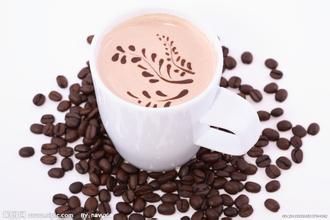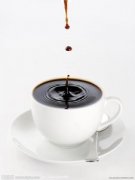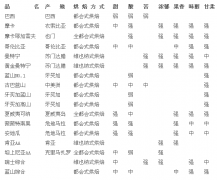Coffee maker (coffee pot) introduce the history of coffee pot

The history of the coffee pot
Coffee pot is one of the earliest inventions in Europe. It was invented in France around 1685 and spread widely during the period of Louis XV. It's just a glass water bottle with a heating metal plate and an alcohol lamp underneath. Because this kind of coffee pot was very time-consuming, American Benjamin Thompson invented the Langford filter coffee pot, which was very popular at that time.
In 1763, the Frenchman Don Madan invented to put the crushed coffee beans into a flannel pocket and hang them on the edge of the pot. After injecting hot water, the coffee in the bag was heated for a long time to produce different forms of cooking, which greatly improved the aroma of the coffee.
In 1800, the Archbishop of Paris de Belo invented a pot-type coffee heater divided into two stages, designed to keep the aroma of coffee from overflowing, and can be said to be the ancestor of today's trickle coffee pot. The pot places the ground coffee in a hole-shaped container at the top of the coffee pot, from which hot water is injected, and the water flows through these small holes to the bottom of the coffee pot. It is characterized by the use of cold water to quench, at the rate of 40 drops per minute, a drop to slowly absorb the essence of coffee. Due to the extremely slow speed, coffee powder with extremely fine grinding should be selected for extraction. The coffee brewed in this way is extremely low in caffeine and tastes particularly refreshing.
In 1840, Nabel, a British marine engineer, invented the siphon coffee heater. This kind of heater is designed according to the reason that when the water boils, the air pressure in the container of coffee powder decreases, so it automatically absorbs boiling water into the coffee. And this is the predecessor of the Belgian royal coffee pot.
Types of coffee pots
There are three types of electric coffee pots: percolation type, drip type and vacuum type. The percolation coffee pot is the early product of the electric coffee pot, although the price is low, but it is not convenient to use and the reliability is poor. The coffee made by the vacuum electric coffee pot has a strong flavor, but its structure is complex and prone to failure. The fittest survive, and now the only thing left on the market is the drip-type electric coffee maker.
Although there is only one type of electric coffee maker in general, there are ordinary coffee pots that are only used to make coffee powder, two-in-one coffee makers that can grind coffee beans themselves, and Italian steam coffee pots that can make milk bubbles. If you are a 9-to-5 office worker with limited time, a cheap ordinary coffee maker is a good choice, and if you have reached the level of "fever", then the mellow smell of your own ground coffee powder and charcoal-roasted coffee with a beautiful head of milk foam and delicious cinnamon powder will certainly be your best choice.
Coffee pot selection and purchase
In terms of specifications, the power of the household electric coffee maker is less than 1000 watts, the capacity is 0.5m / 0.8 liter, and it can make 480 cups of coffee. If you often entertain friends or family, you can also choose a larger capacity, but it is best not to exceed 1.5 liters.
From the quality point of view, the appearance of the electric coffee pot should be a color coordination, the production of fine arts and crafts, the damage of various parts, rough are not allowed, the bottom of the kettle is not leaking is the minimum requirement.
Coffee pot use
You can't burn it empty. Like most kitchen appliances, the electric coffee pot cannot be burned empty. It must be filled with water and coffee before turning on the power. Never turn on the electricity in the empty pot. When brewing coffee, you should always pay attention to the water level in the pot. If the water is about to dry up, you should cut off the power supply in time, otherwise the pot will be burned out.
Be waterproof. The electric coffee pot should not be dry-fired and should not add too much water, otherwise the water will overflow and wet the electric heating element after boiling. At the same time, do not splash water on the electrical parts of the kettle body when adding water, so as not to reduce the insulation performance. When cleaning the coffee pot, the pot body can not be directly immersed in water, but to remove the filter, filter cleaning, other parts had better be wiped with a clean soft cloth.
Remove dirt regularly. Before using the electric coffee pot for the first time, you should boil two pots of boiling water to remove the bad smell. In the future, the scale should be removed 2-5 times a year according to the use.
Important Notice :
前街咖啡 FrontStreet Coffee has moved to new addredd:
FrontStreet Coffee Address: 315,Donghua East Road,GuangZhou
Tel:020 38364473
- Prev

How to understand the English tips of the coffee machine?
SELECT PRODUCT READY FOR USE, this is the normal state in which you can make coffee. Choose the kind of coffee you like and press the button. There is a problem or blocking in the BREWUNITBLOCKED puffing group. If you need to clean and check and return to your place, it is recommended to contact the maintenance personnel on the manual. There is an error in the BREWUNIT MISSING puffing group. The position is not in the right place or the service door is not closed. Re-
- Next

Analysis of varieties and characteristics of Coffee Bean producing area
Related
- Beginners will see the "Coffee pull flower" guide!
- What is the difference between ice blog purified milk and ordinary milk coffee?
- Why is the Philippines the largest producer of crops in Liberia?
- For coffee extraction, should the fine powder be retained?
- How does extracted espresso fill pressed powder? How much strength does it take to press the powder?
- How to make jasmine cold extract coffee? Is the jasmine + latte good?
- Will this little toy really make the coffee taste better? How does Lily Drip affect coffee extraction?
- Will the action of slapping the filter cup also affect coffee extraction?
- What's the difference between powder-to-water ratio and powder-to-liquid ratio?
- What is the Ethiopian local species? What does it have to do with Heirloom native species?

